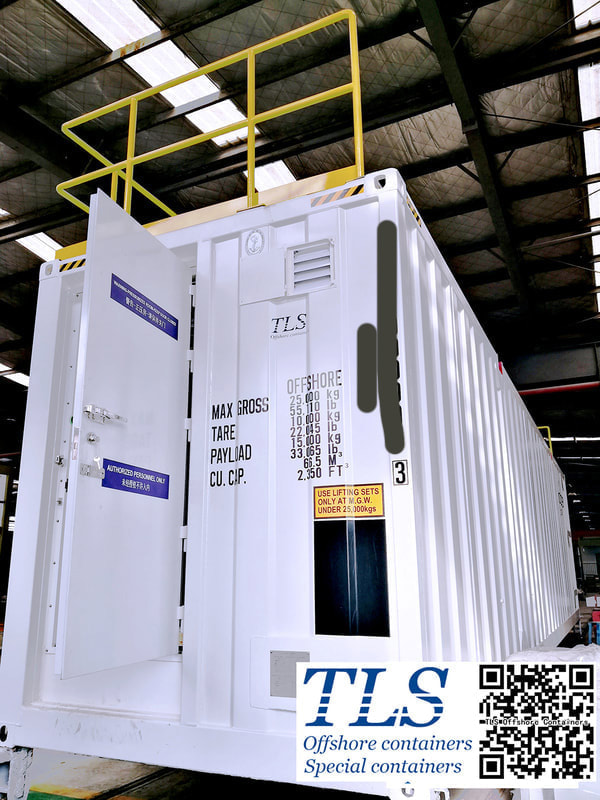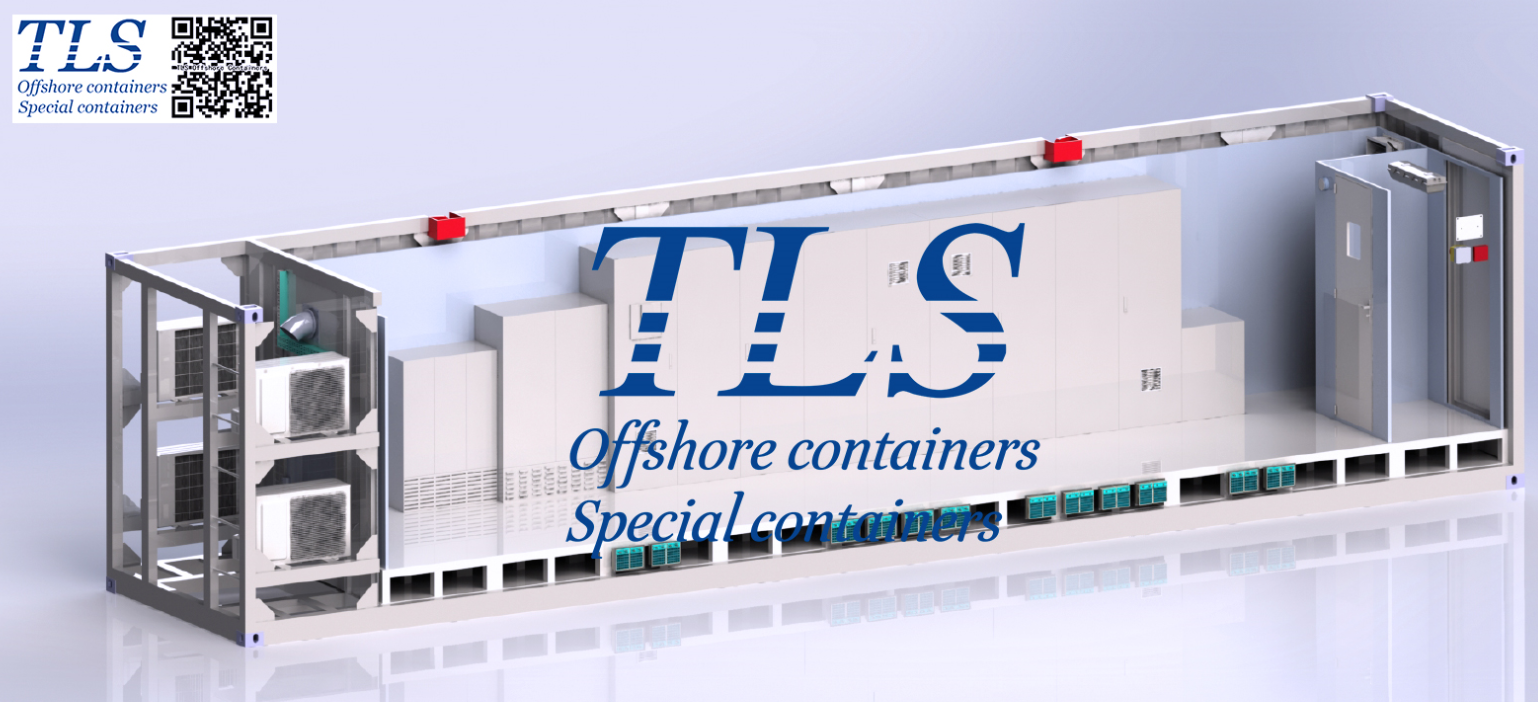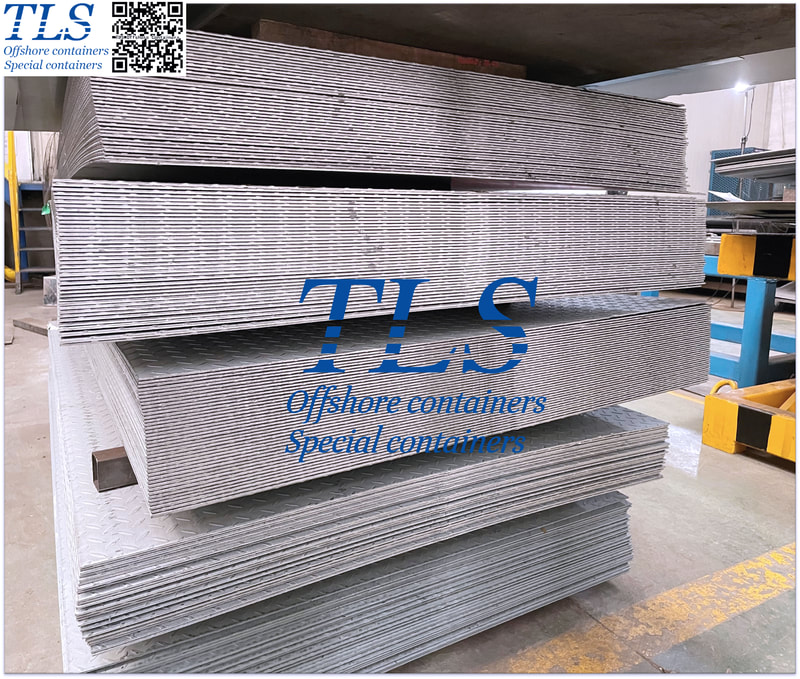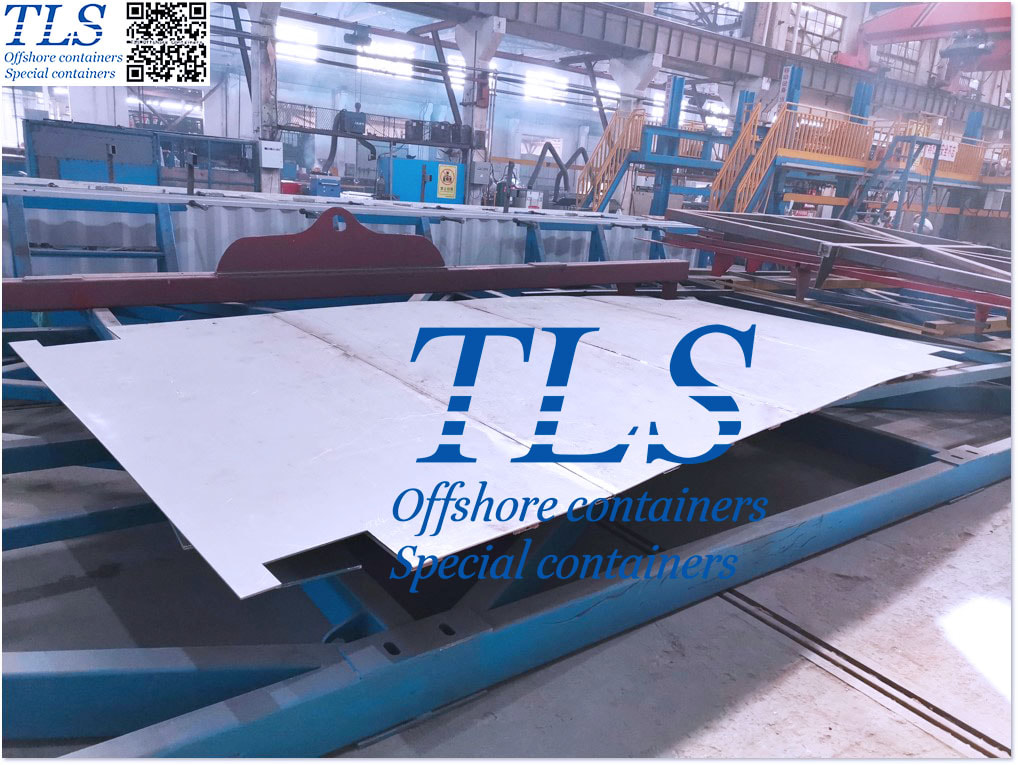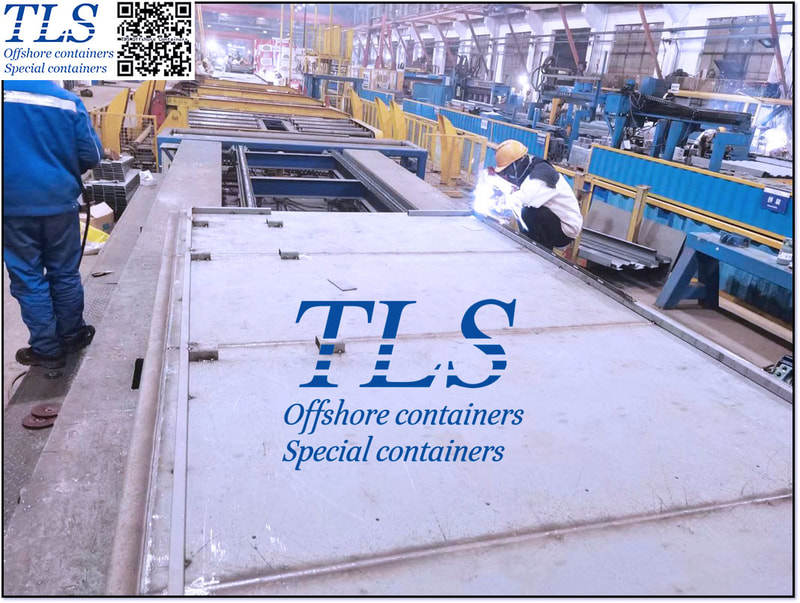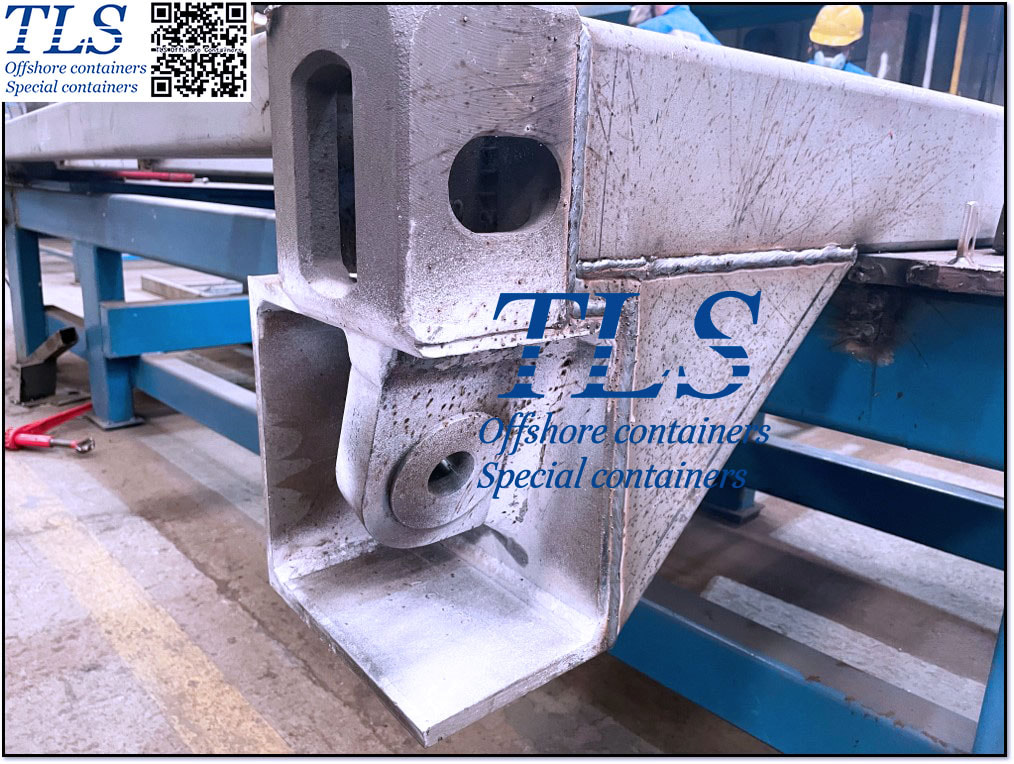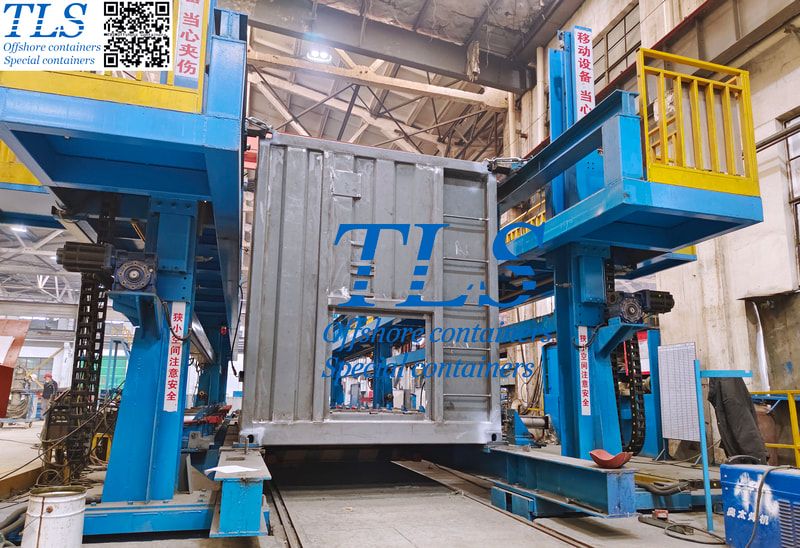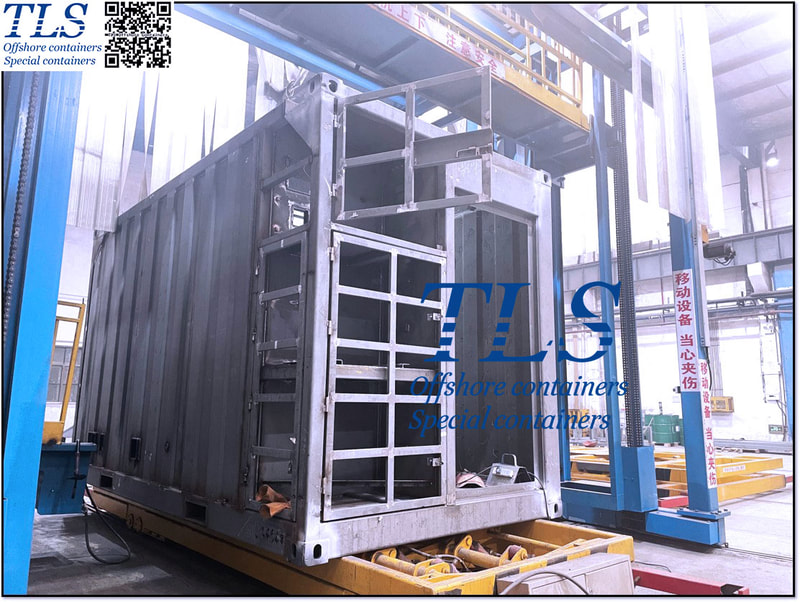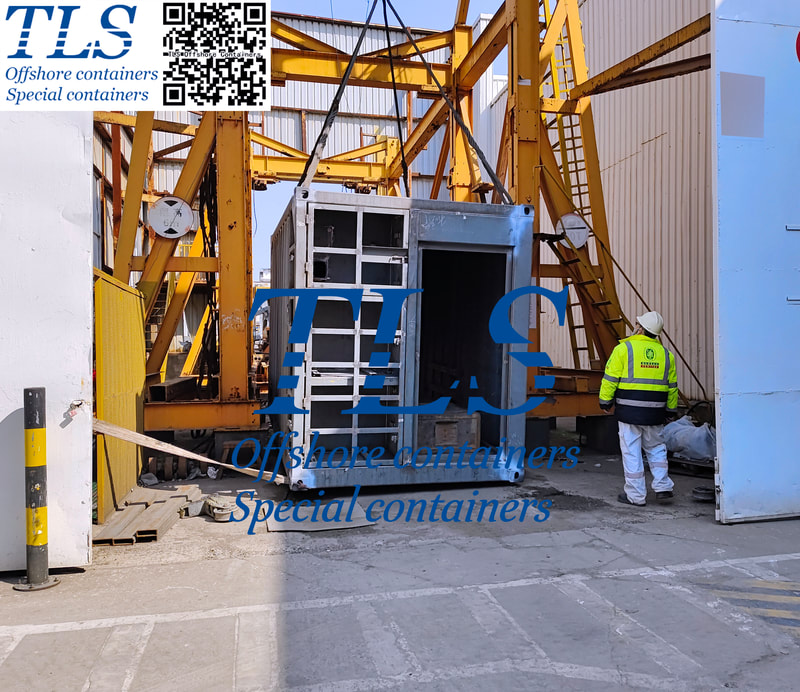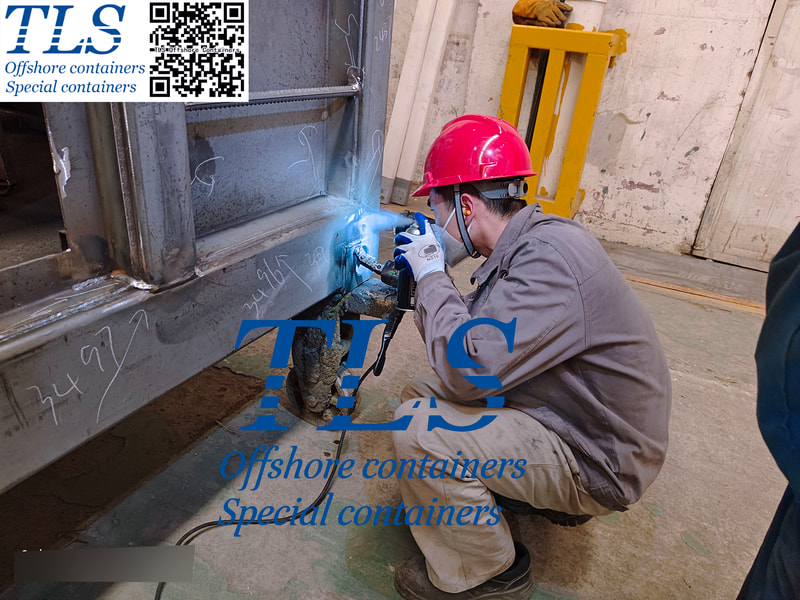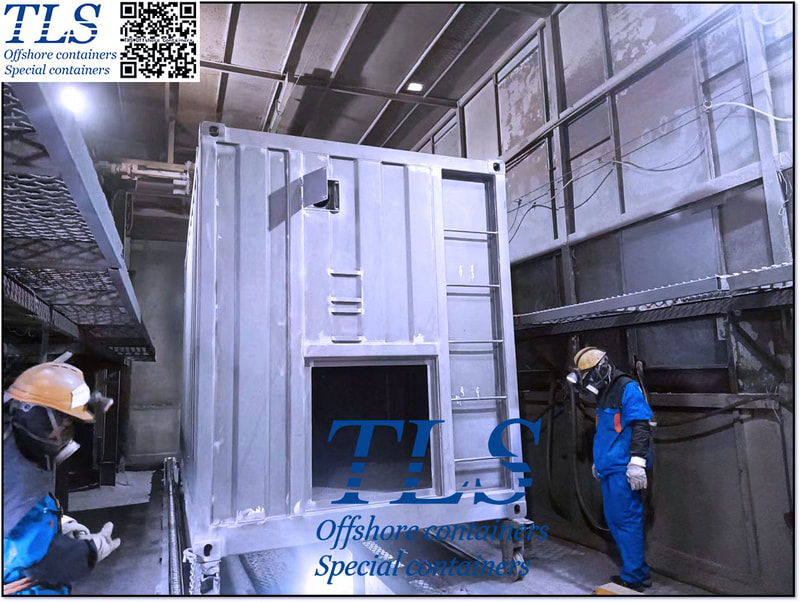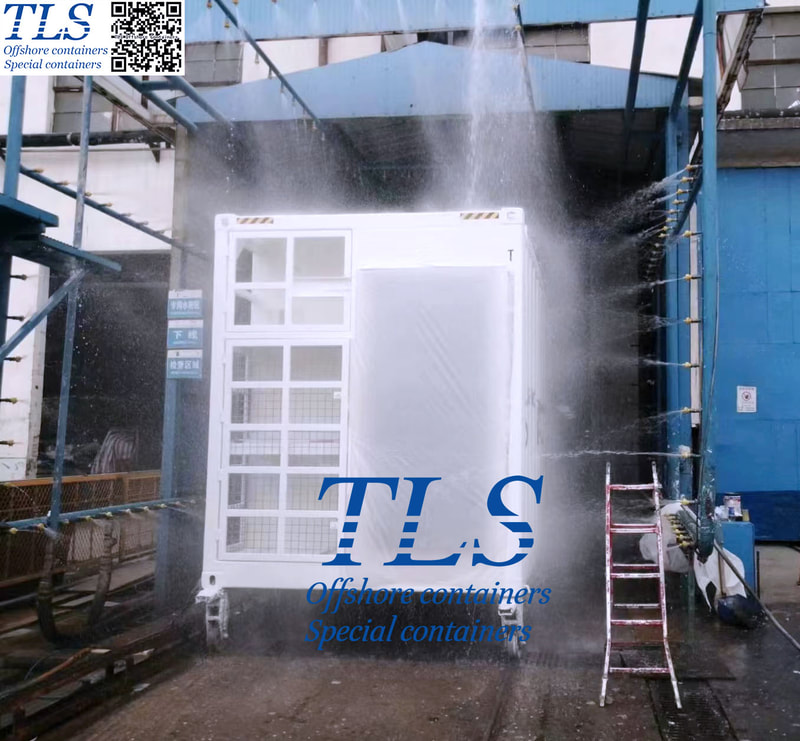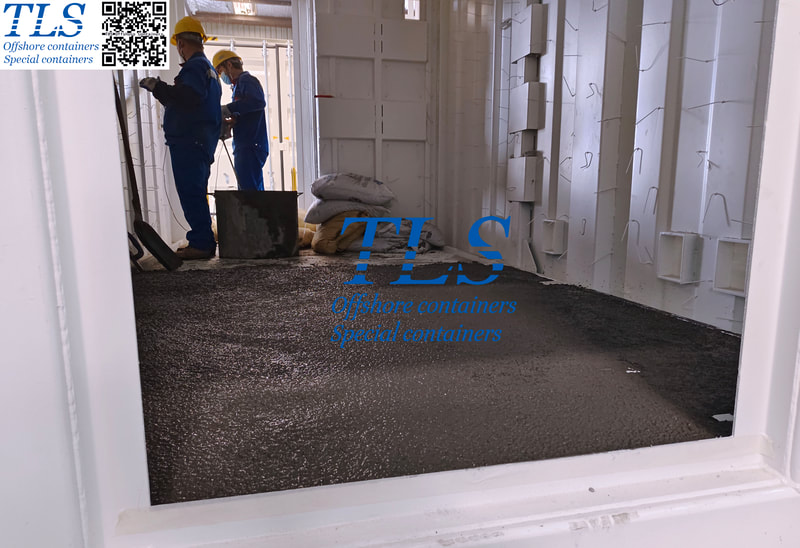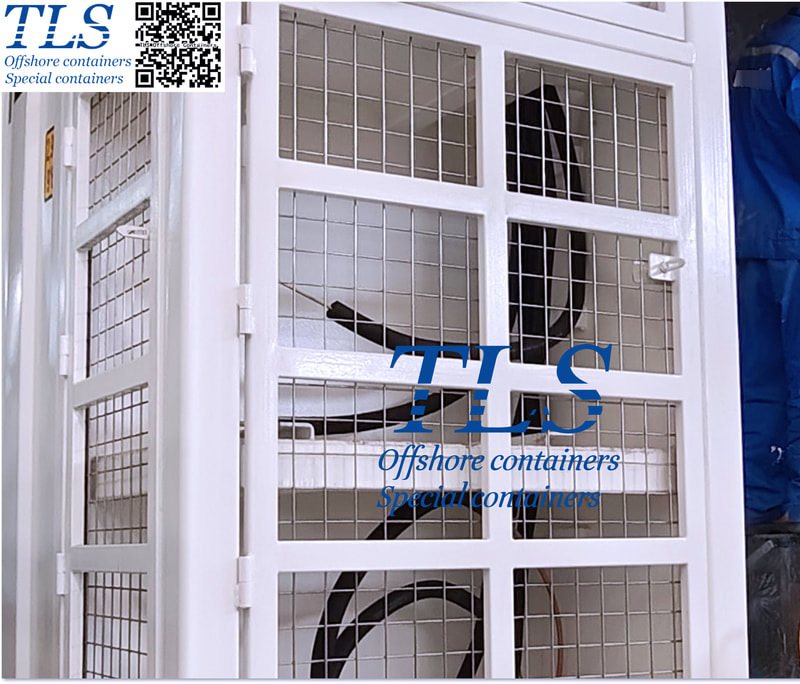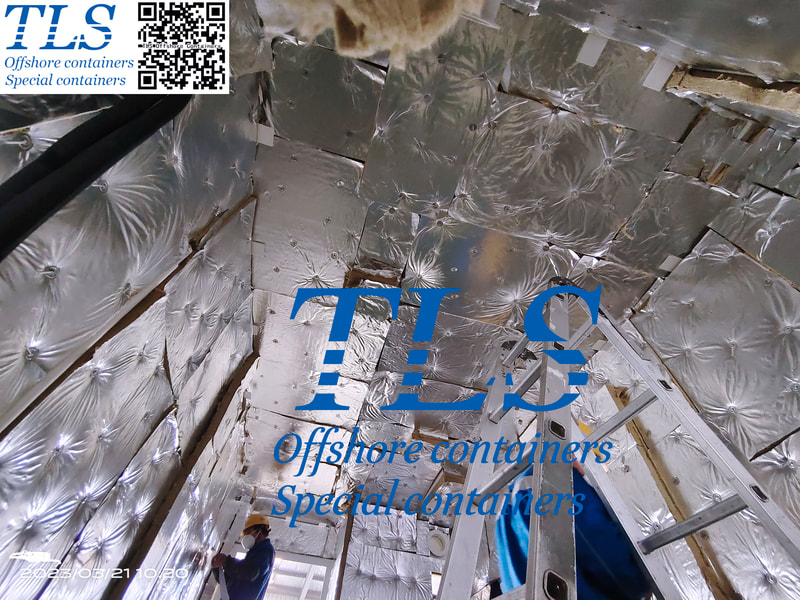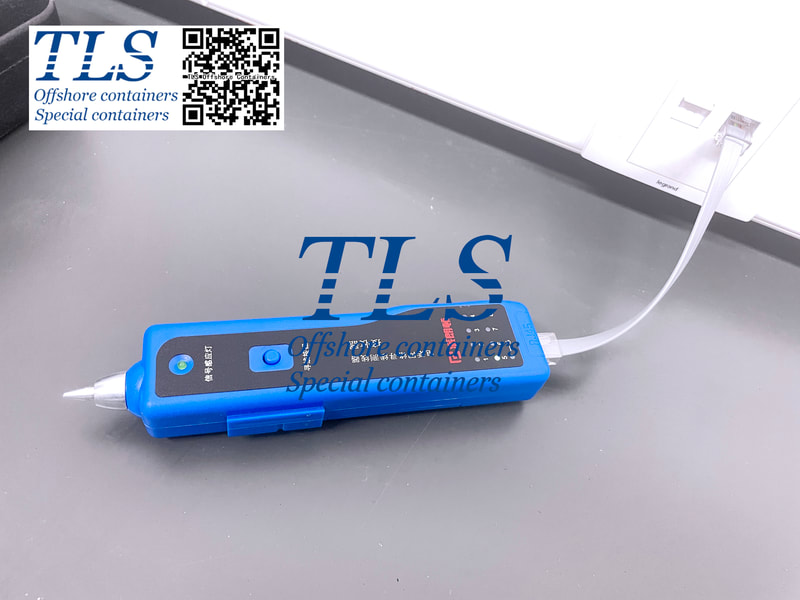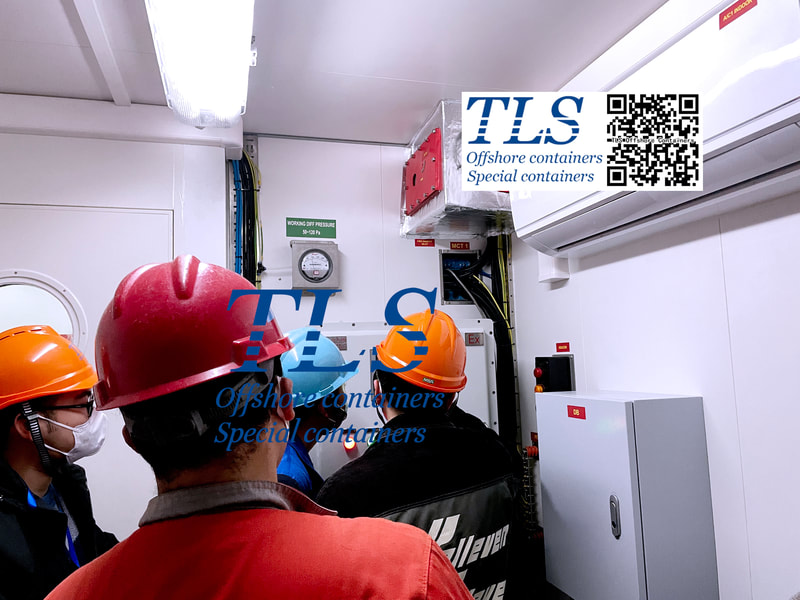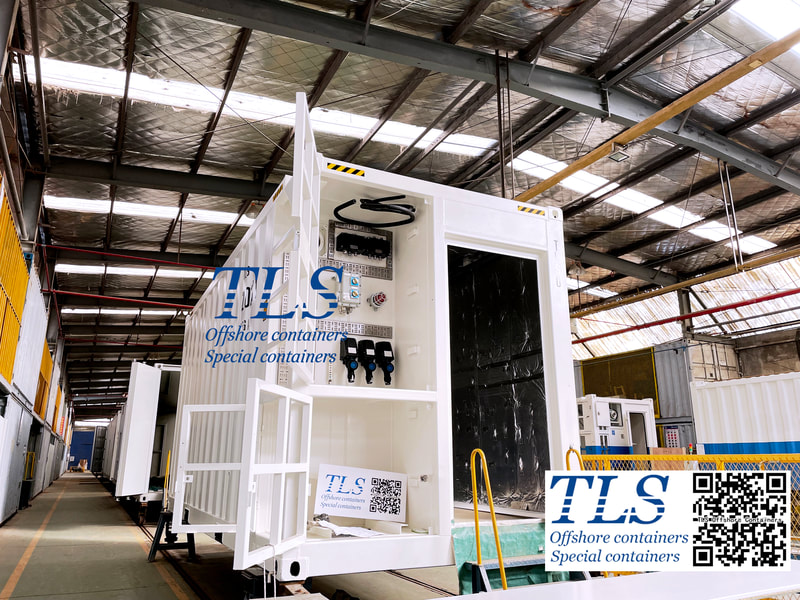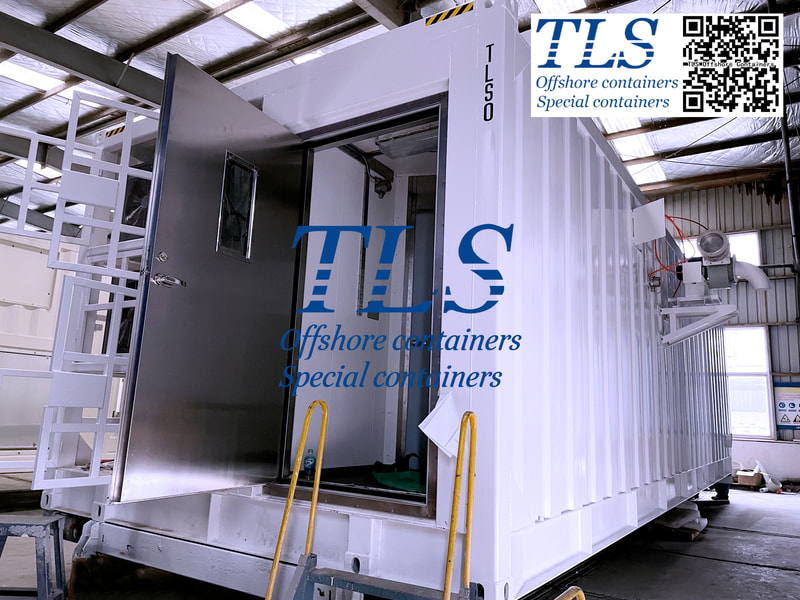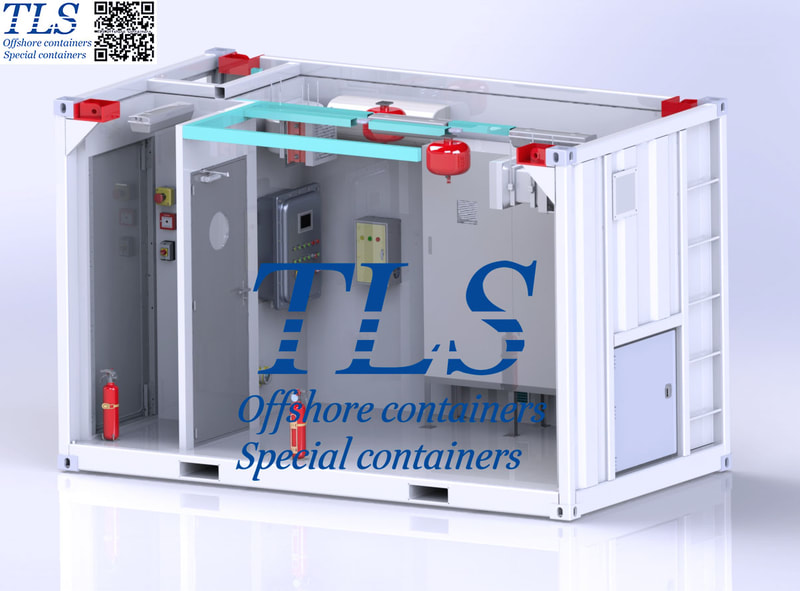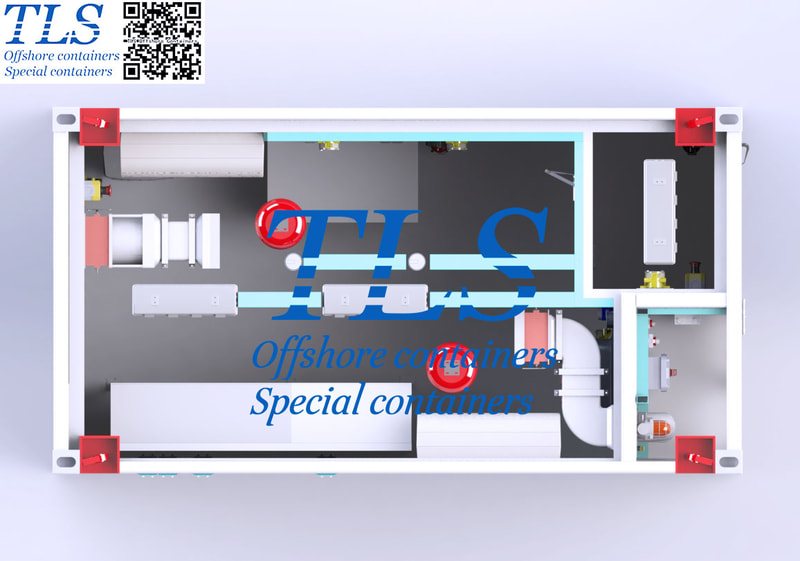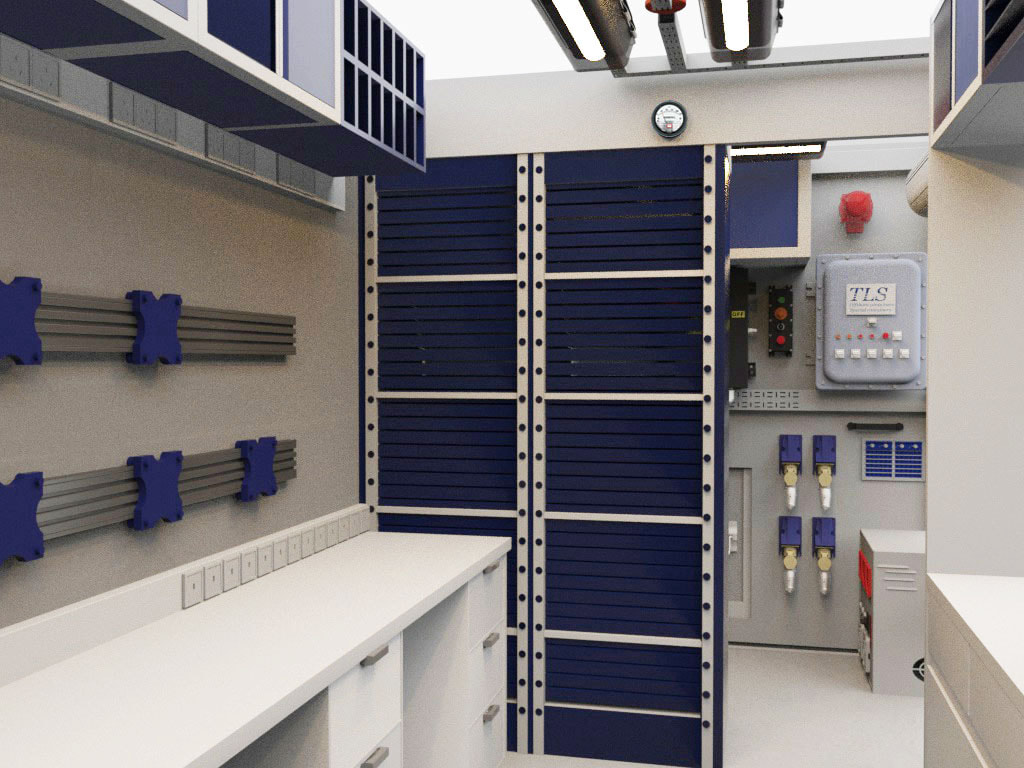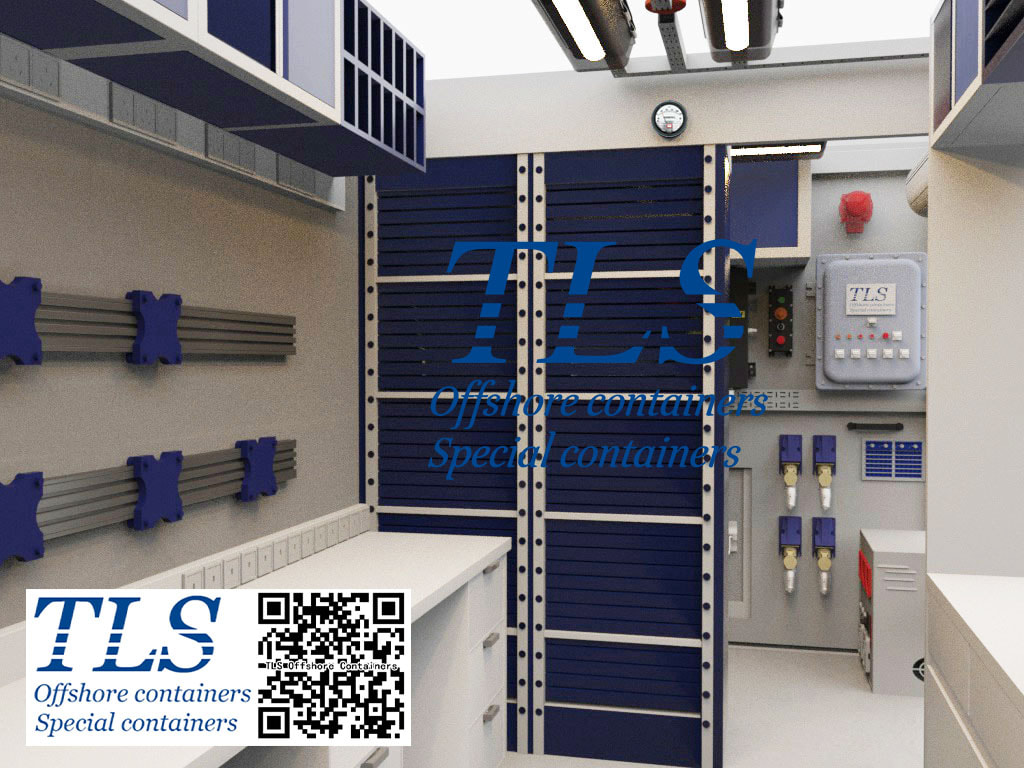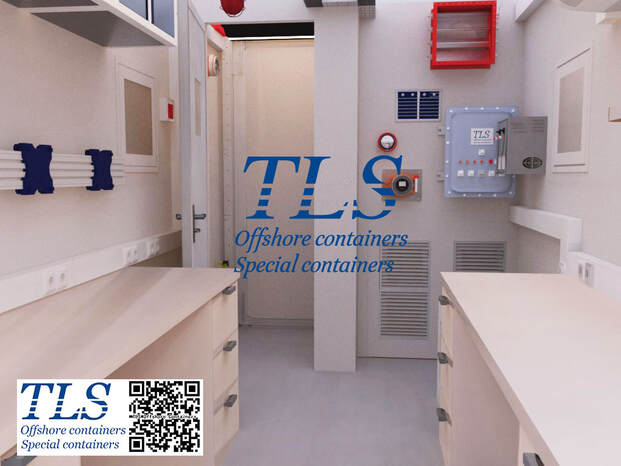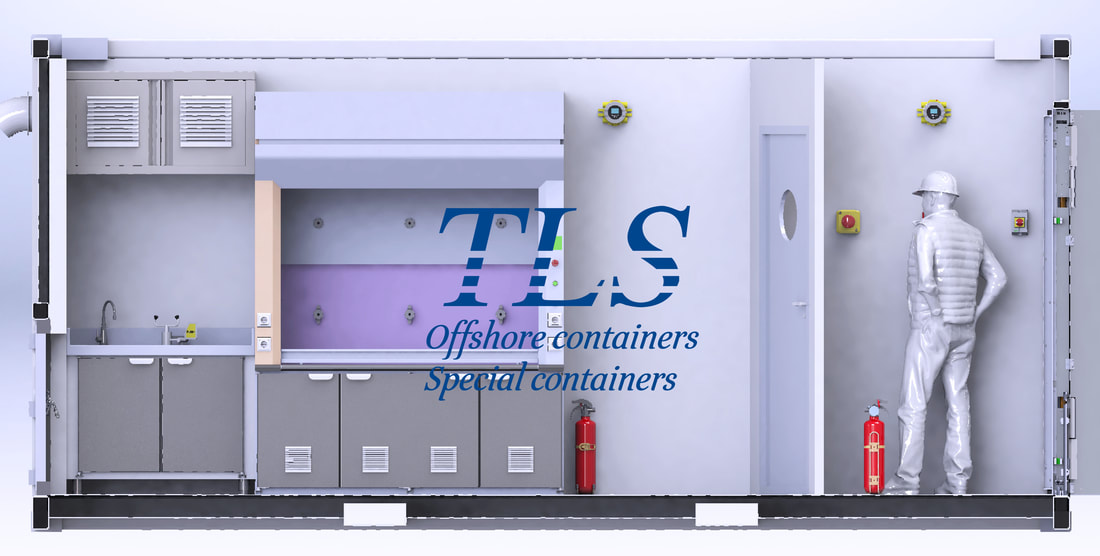Offshore Pressurized Container: The Ultimate MCC Shelter by TLS Offshore Containers International4/4/2023
The offshore industry continually seeks innovative solutions to ensure safe and efficient operations in challenging environments. One such solution is the Offshore Pressurized Container, specifically designed as a Motor Control Center (MCC) shelter. TLS Offshore Containers International, a leading provider of high-quality offshore containers, is the company behind the production of these state-of-the-art pressurized containers. This article will explore the unique features, applications, and benefits of the Offshore Pressurized Container, showcasing its role as a game-changer in the offshore industry. Offshore Pressurized Container: What is it? The Offshore Pressurized Container is a specialized container designed to serve as a Motor Control Center (MCC) shelter in offshore environments. These containers are built to withstand extreme weather conditions, high pressures, and harsh working environments that are common in offshore operations. They provide an ideal solution for housing MCCs, electrical equipment, and control systems, ensuring safety, efficiency, and reliability. TLS Offshore Containers International: The Company Behind the Innovation TLS Offshore Containers International is a globally renowned manufacturer of offshore containers and equipment. With over two decades of experience, the company has earned a reputation for delivering high-quality, durable, and innovative products to clients across the globe. The Offshore Pressurized Container is another testament to their commitment to excellence in the offshore industry. Key Features of the Offshore Pressurized Container The Offshore Pressurized Container comes with several unique features that set it apart from other MCC shelters: a. Pressurized environment: The container maintains a pressurized environment to protect sensitive equipment and personnel from harmful substances, such as toxic gases and vapors. b. Customizable design: The container can be customized to meet specific client requirements, such as dimensions, layout, and technical specifications. c. Robust construction: Made from high-quality materials, the container is built to withstand harsh offshore conditions, including extreme temperatures, corrosive elements, and heavy loads. d. Safety features: The container is equipped with numerous safety features, such as fire detection and suppression systems, gas detection systems, and emergency escape routes. e. Compliance with industry standards: The Offshore Pressurized Container meets international offshore container standards, including DNV 2.7-1, EN 12079, and ISO 10855. Applications of the Offshore Pressurized Container The Offshore Pressurized Container is ideal for a wide range of offshore applications, including: a. Offshore oil and gas platforms: The container serves as a safe and secure MCC shelter on drilling rigs, production platforms, and floating production, storage, and offloading (FPSO) units. b. Offshore wind farms: The container can be used as an MCC shelter in wind farm substations, ensuring reliable control and monitoring of wind turbines. c. Marine construction projects: The container can be utilized in various marine construction projects, such as bridge construction, underwater tunneling, and port infrastructure development. d. Offshore research facilities: The container can provide a safe and secure environment for scientific research and data collection in offshore locations. Benefits of the Offshore Pressurized Container Investing in an Offshore Pressurized Container from TLS Offshore Containers International offers several advantages: a. Enhanced safety: The container's pressurized environment and safety features protect both equipment and personnel from potential hazards. b. Cost-effective solution: The container's durable construction and ability to withstand harsh offshore conditions lead to lower maintenance costs and extended service life. c. Customization options: The ability to customize the container to meet specific client requirements ensures a tailor-made solution for each project. d. Improved efficiency: The container's design allows for easy installation, operation, and maintenance of MCCs and other electrical equipment, streamlining offshore operations. e. Compliance with industry standards: By meeting international offshore container standards, the Offshore Pressurized Container ensures compliance with regulatory requirements and reduces the risk of non-compliance penalties. How to Get Your Offshore Pressurized Container To learn more about the Offshore Pressurized Container and how it can benefit your offshore operations, visit the official TLS Offshore Containers International website at https://www.tls-containers.com/pressurised-container.html. Here, you can find detailed information about the product, as well as contact information to get in touch with the company's expert team who can assist with your specific needs and requirements. The Offshore Pressurized Container by TLS Offshore Containers International is an innovative solution that provides a safe, efficient, and customizable MCC shelter for various offshore applications. Its unique features, such as the pressurized environment, robust construction, and compliance with industry standards, make it an ideal choice for offshore operators looking to improve safety and efficiency in their operations. By investing in an Offshore Pressurized Container, businesses can reap the benefits of enhanced safety, reduced operational costs, and streamlined operations while ensuring compliance with international standards. Visit the TLS Offshore Containers International website today to learn more about this game-changing product and how it can revolutionize your offshore operations. 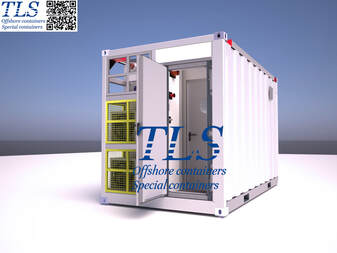 About offshore positive pressure container used in Zone1/Zone2 Positive pressurized containers can provide a safe environment for equipment and people in hazardous areas. The principle of a positive pressure blast-proof container is to achieve the technical requirements of blast-proofing through enclosure. A positive pressure ventilation system is the key. It delivers fresh air from a safe area to the container through ducts that pure the air inside the container and maintain a slightly higher air pressure inside the container than outside. In this condition, no harmful and flammable gas can enter the enclosure.If the blast control system detects the presence of hazardous gases in the enclosure or fails to maintain positive pressure, the alarm system will sound an alarm and issue a warning. If the control conditions inside the container are still not required within the specified time, the non-explosive device will automatically cut off. Thus, the common equipment in the container fulfils the purpose of blast protection. 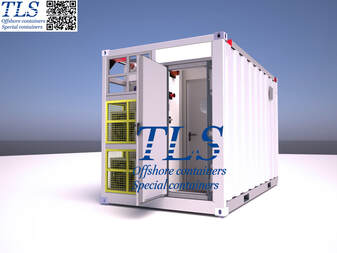 About the air lock room of the positive pressure container The positive pressure container provided by TLS arrange two doors between the safe zone inside the container and the hazardous zone outside the container, and the isolation space formed between the two doors is the air-lock compartment. The purpose of setting the air-lock compartment is to control the airflow when people or materials enter and exit. The two doors of the air-lock compartment are usually interlocked, with one door open and the other closed. When entering the offshore container, the operator enters the air-lock compartment through the enclosed outer door and then opens the inner door after closing the enclosed outer door. In this way, no harmful gases from the outside can enter the main compartment, and the pressure of the air in the main compartment does not fall too fast.  About CPFG(combined pressurization fire&gas system) of positive pressure container CPFG is a complete suite of intelligent booster control systems, typically used in positive pressure containers, with gas detectors, smoke detectors, heat detectors, fire alarms, pressure switches, flow switches, booster fans, emergency stop & alarm mute switches, and other explosion protection equipment. The CPFG is also connected to a power distribution board, which will be connected by non-explosive devices inside the container, such as sockets, fume hoods, computers, water heaters, etc. When the power is turned on, the CPFG turns on the booster fan to purge the inside of the container to positive pressure. This prevents dangerous gases entering from outside. When the environment inside is safe, the DB (distribution board) will start up and the internal non-explosive electrical equipment can be used normally. The DB cannot be started if the environment inside the container is not secure. During operation, if dangerous gases are detected in the container or the positive pressure cannot be maintained, the alarm system will sound an alarm and issue a warning. If the control conditions in the container are not met within the specified time, the non-explosive device is automatically turned off. Therefore, the general equipment in the container is suitable for blast protection purposes. More information please download the brochure for reference. Offshore pressurised mud logging cabin brochure MCC | Switchgear | VFD | VSD pressurised shelter Container Shell Production 1.Plate and Section Steel Pretreatment 2.Stamping 3.Welding Prefab 4.Bottom, End Frame, Top and Side Structure Fabrication 5.Main Assemble 6.Lifting Test,Dropping Test, NDT for The Welding 7.Sanding and Painting (C5-H coating system--outside 260μm, inside 120μm) 8.Offline and Watertight Test Container Interior Decoration 1.Floor Material Laying 2.AC Copper Pipe Pre-embedded 3.The First Rock Wool Laying 4.The Second Rock Wool Laying 5.Aluminum Film Tape Paste 7.Hardware installation 8.Circuit debugging/cross inspection Subsequent production process is waiting for update. Hazardous environments, such as offshore oil and gas exploration, chemical processing plants, and mining operations, pose a significant risk to the workers in these industries. Explosive gases and substances present a constant danger, making it crucial to ensure the safety of workers in these environments. One company that is leading the way in revolutionizing safety in hazardous industries is TLS Offshore Containers, with positive pressurized ex-proof container. This container is designed to maintain a positive pressure inside, preventing explosive gases or substances from entering the container. It is equipped with an air filtration system that circulates clean, dry air inside the container, ensuring a safe working environment for workers. The importance of TLS Offshore Containers' positive pressurized ex-proof container cannot be overstated. It provides enhanced safety features, such as preventing any spark or ignition source from entering the container and maintaining a positive pressure inside. This makes it a game-changer in the world of industrial safety. The container is also highly customizable, allowing it to be tailored to meet the specific needs of different industries and applications. It can be equipped with various safety features, such as fire suppression systems, gas detection systems, and emergency shut-off systems, ensuring the utmost safety of workers. Positive pressurized ex-proof containers have a wide range of applications in hazardous industries. They are commonly used in offshore oil and gas exploration, chemical processing plants, and mining operations, to provide a safe and secure storage solution for explosive gases and substances. In conclusion, TLS Offshore Containers' positive pressurized ex-proof container is a crucial tool in ensuring the safety of workers in hazardous environments. It provides enhanced safety features, is highly customizable, and has a wide range of applications in various industries. It is a game-changer in the world of industrial safety and is leading the way in revolutionizing safety in hazardous industries. Written by OliverPressurized containers are a feature product of TLS, these containers are designed to use a positive pressure differential to keep the environment inside the shell safe. It has important applications in many industries, especially in hazardous environments, such as oil and gas industry, chemical processing plants, etc.
Intelligent pressure vessels help ensure the safe and efficient operation of equipment such as MWD/LWD and MCC, providing a reliable and safe environment for these critical components and workers. Written by Mandy In industrial settings where flammable and explosive materials are present, ensuring the safety of workers and equipment is of utmost importance. Positive pressure explosion-proof containers provide a solution to this challenge by offering a safe and secure shelter for equipment in hazardous environments. An explosion-proof container is a type of enclosure that is designed to contain an explosion and prevent its spread to the surrounding area. Positive pressure explosion-proof containers are unique in that they maintain a positive pressure inside the container, which acts as a barrier against flammable or explosive gases or vapors that may enter. The positive pressure inside the container is maintained by a ventilation system that constantly circulates air. This creates a positive pressure differential between the inside and outside of the container, making it difficult for flammable or explosive materials to penetrate. Additionally, the ventilation system helps to remove any buildup of flammable or explosive gases that may occur inside the container. Positive pressure explosion-proof containers are used in a variety of industries, including petrochemical, pharmaceutical, and manufacturing. They are commonly used to protect equipment such as control panels, electrical switchgear, and motors. One of the key benefits of positive pressure explosion-proof containers is their versatility. They can be customized to meet the specific needs of different industries and can be configured to accommodate various types of equipment. For example, they can be designed with ventilation systems that are compatible with the equipment being housed, and they can be fitted with electrical and data connections to allow for remote monitoring and control. Another advantage of positive pressure explosion-proof containers is their ease of installation. They can be quickly and easily transported to the site and set up, making them an ideal solution for emergency situations or temporary installations. In conclusion, TLS positive pressure explosion-proof containers provide a vital solution for ensuring the safety of workers and equipment in flammable and explosive environments. By maintaining a positive pressure inside the container, they help to prevent the spread of flammable or explosive gases and vapors, making them a reliable and cost-effective solution for industries dealing with hazardous materials. Written by OliverPositive Pressure Containers: A SOLUTION FOR SAFE AND COST-EFFECTIVE OPERATION IN HAZARDOUS AREAS2/3/2023
Zone 1 and Zone 2 refer to dangerous areas where explosive environments may exist or may occur during normal operation. Personnel working in these areas are threatened with life safety, and equipment used in these areas must be ex-proof to ensure safe use in potential explosive environments. However, the cost of ex-proof electrical equipment is high, and common general electrical equipment cannot meet the ex-proof requirements, such as monitors, printers, etc. TLS can provide a positive pressure container, whose principle is to meet the ex-proof technical requirements by creating a positive pressure environment. The container is divided into a gas lock area and a main room. The gas lock area is set between the sealed outer door and the main room. There is an air inlet on one side of the container's corner, and an air outlet on the diagonal side of the inlet's corner. An ex-proof fan, a gas concentration detector, and an air flow detector are installed at the air inlet. And both the air inlet and outlet have wind valves and fire valves. The advantages of the positive pressure containers,
Written by Mandy A mud logging cabin is a type of pressurized container used in the oil and gas industry for mud logging, which is the process of monitoring geologic formations during the drilling of a well. It is typically manufactured from TLS offshore containers and is designed to provide a safe and controlled environment for the mud logging personnel to perform their work. The cabin is equipped with various instruments and technology to measure and analyze data such as fluid density, drilling fluid pressure, and temperature, among others. A mud logging cabin is an essential component in the drilling process as it provides real-time information about the geologic formation being drilled. The cabin is typically built to withstand harsh offshore drilling environments and can withstand pressure and temperature changes. It is equipped with specialized instrumentation and technology that enable mud loggers to monitor drilling fluid properties and geologic parameters. The cabin is equipped with data acquisition systems, well logging equipment, fluid analysis systems, and computer systems to store and analyze data. The mud loggers in the cabin use this equipment to monitor drilling parameters and collect data about the rock formations, fluid flow, and other geological information. The information gathered is then used to make informed decisions about the drilling process and to ensure the safety of the well. In addition to its technical capabilities, mud logging cabins are also designed for comfort and convenience. They typically include air conditioning, heating, and other basic amenities to provide a comfortable work environment for the mud loggers. Overall, mud logging cabins play a critical role in the drilling process by providing real-time information about the geologic formation and ensuring the safety of the well. Specification
More information about offshore pressurised container/cabin Don’t hesitate to contact us for more information about the offshore pressurised container. Our skilled engineers are eager to explain the possibilities for your applications. Product brochures: Offshore pressurised mud logging cabin brochure MCC | Switchgear | VFD | VSD pressurised shelter The ventilation part of the positive pressure explosion-proof container mainly includes the cooling and heating system of the fan for air supply and ventilation, indoor air conditioning, and heater. In the container, the air is supplied from a long distance by a centrifugal exhaust fan to finally achieve the purpose of indoor positive pressure. Refrigeration/Heating: Choose split air conditioners for explosive gas atmospheres. The ambient temperature is -7°C~43°C, and 80% of the working conditions are widely used in hazardous environments such as oil exploration and refining, as well as offshore oil platforms. The internal unit can choose not to be explosion-proof, and foreigners must have the overall explosion-proof certification of the explosion-proof organization. Air supply fan: The booster fan will choose a centrifugal explosion-proof fan. When the booster system is activated, the fan will always work, so the protective gas can continuously replace the original air in the room, so as to ensure the safety of the container. In order to monitor the air exchange rate, a flow sensor is installed at the air outlet. As a new container product in recent years, the positive pressure explosion-proof container still needs to accumulate technical strength. It has great prospects in the future container market and because it is a high-level service container, its added value is very high Land-based oil exploration and offshore platform oil exploration areas have the potential to produce explosive gases, and for areas where fires and explosions may occur are known as hazardous areas and are generally divided into three zones - Zone 0, Zone 1, and Zone 2. Modern drilling and exploration sites require strict explosion-proof performance of the equipment on site, so TLS provides the perfect solution with positive pressure explosion-proof containers
The principle of the positive pressure explosion-proof container is to achieve explosion-proof technical requirements through the container shell, so that all the regular non-explosion-proof machinery installed in the container achieve the purpose of explosion-proof. The positive pressure ventilation system is the key to making the container explosion-proof. When the total power supply is turned on, firstly the system automatically turns on the explosion-proof blast system. The explosion-proof centrifugal fan extracts fresh air from 30 meters outside the danger zone into the positive pressure container. The air in the positive pressure container is purged and a positive pressure of more than 50pa is established. The total power supply is automatically turned on when the control conditions are met, then the power supply can be turned on to control the power supply and turn on other electrical equipment in the positive pressure container. In the process of turning on or in the operation of the equipment in the container, if the explosion-proof control system monitors the presence of dangerous gases in the container or fails to reach the corresponding positive pressure, the alarm system will alarm and warn, and if the control conditions in the container are still not met within the specified time, or if the alarm limits are reached directly, the non-explosion-proof control system in the container will be closed automatically, so as to achieve the purpose of explosion-proof. Intelligent pressurized containers can provide a safe environment for equipment and people in hazardous areas. The principle of a positive pressure EX-proof cabin is to achieve the technical requirements of blast-proofing through enclosure. A positive pressure ventilation system is the key. It delivers fresh air from a safe area to the container through ducts that pure the air inside the container and maintain a slightly higher air pressure inside the container than outside. In this condition, no harmful gas can enter the enclosure. If the blast control system detects the presence of hazardous gases in the enclosure or fails to maintain positive pressure, the alarm system will sound an alarm and issue a warning. If the control conditions inside the container are still not required within the specified time, the non-explosive device will automatically cut off. Thus, the common equipment in the container fulfils the purpose of blast protection. |
Archives
July 2024
Categories
All
|
- Home
-
Containerised solutions
- Intelligent pressurised container | MUD logging cabin
- Battery energy storage system (BESS) container
- Flexible grid tied battery storage system
- Laboratory container | workshop container | Equipment containers
- Temporary refuge shelter | Toxic gas refuge | Safe haven
- Offshore accommodation cabin | office container
- Reefer container | Refrigerated container
- Intelligent waste water treatment container
- Fresh water generator container
- Cargo Containers
- Product photos & videos
- News & Blogs
- Contact us
|
Featured products
Intelligent pressurised container Temporary refuge (TR) shelter, toxic gas refuge (TGR) Battery energy storage system (BESS) container Containerised waste water treatment plant Fresh water generator container Reefer container Laboratory container, Workshop container Accommodation container Offshore closed container |
All Rights Reserved 2020 © TLS Offshore Containers / TLS Energy
|


